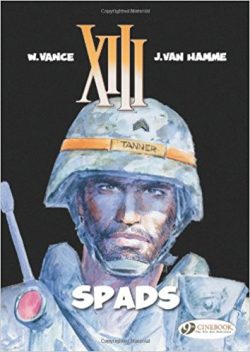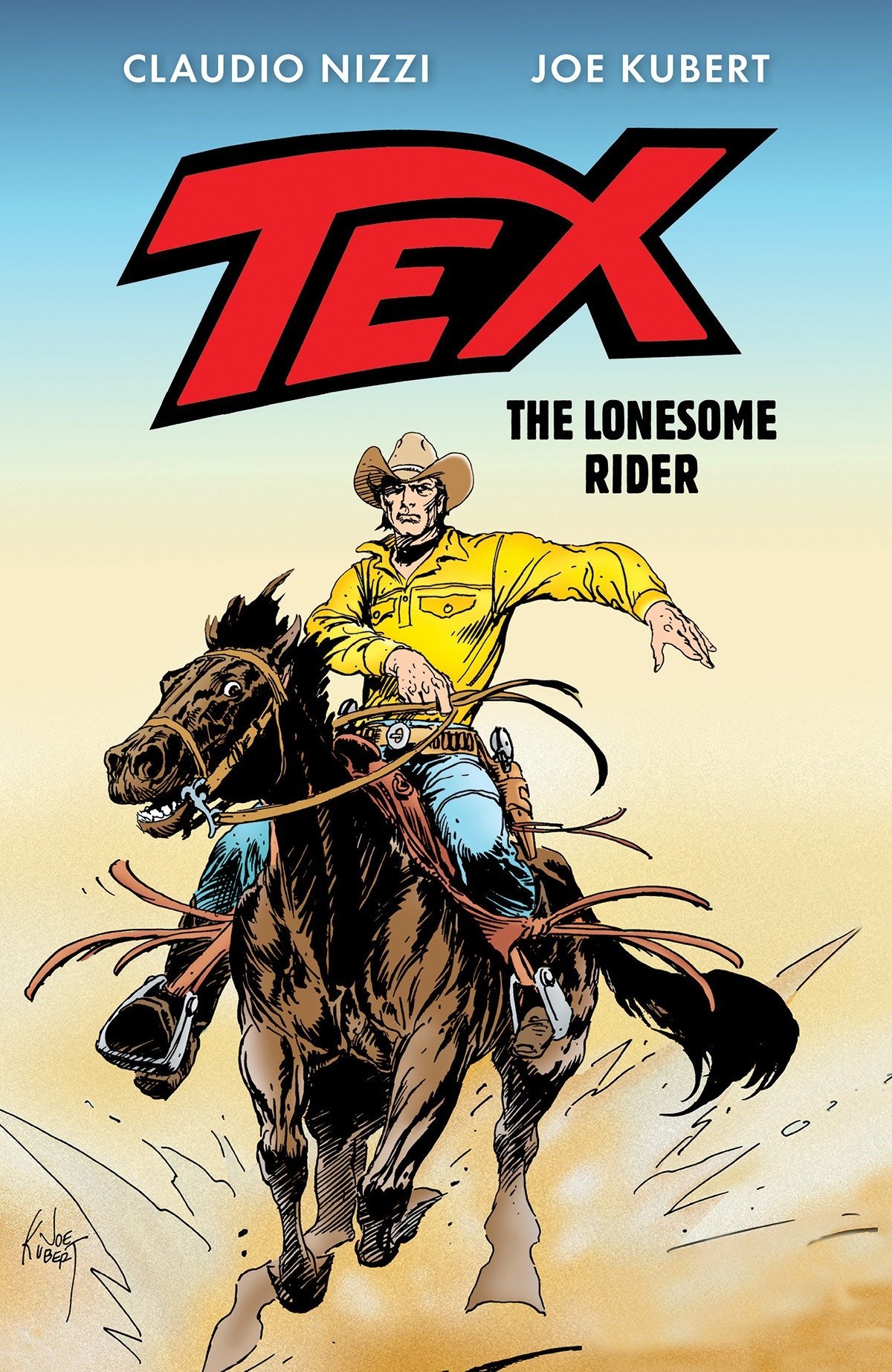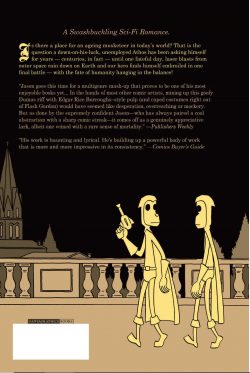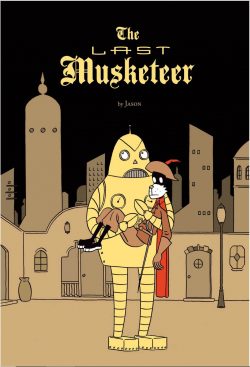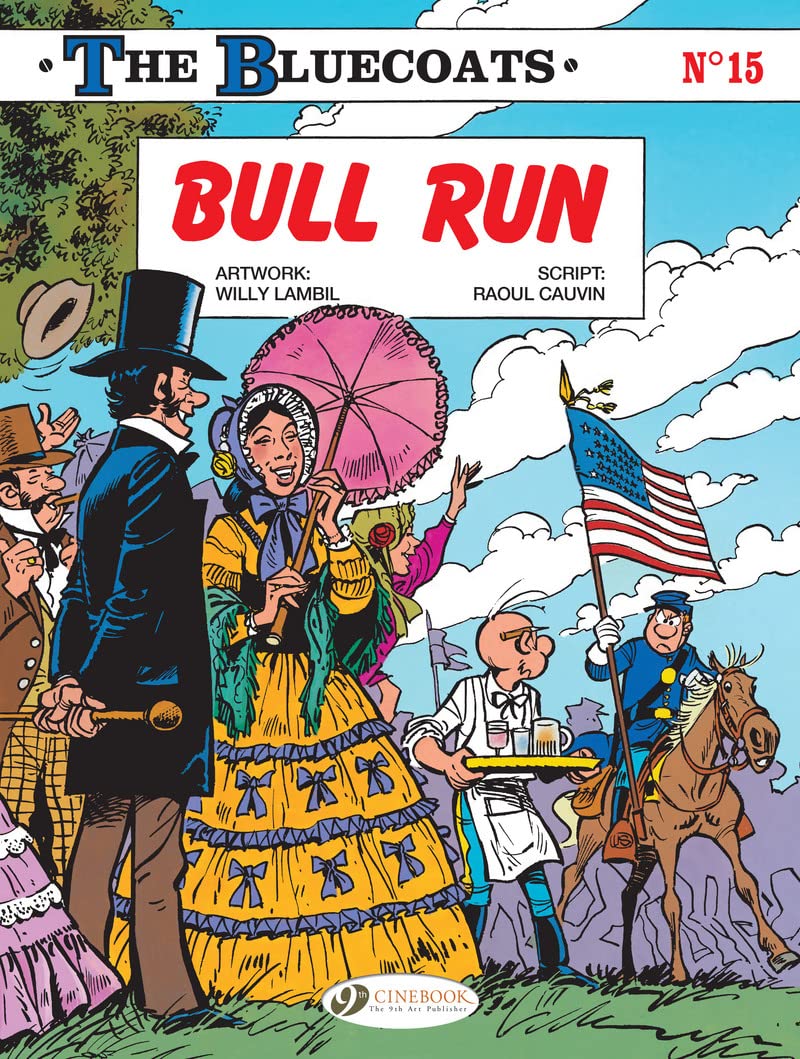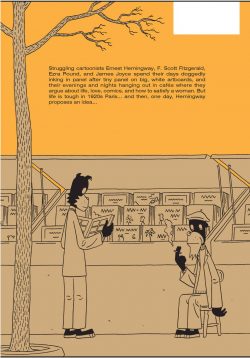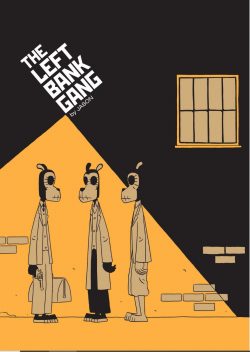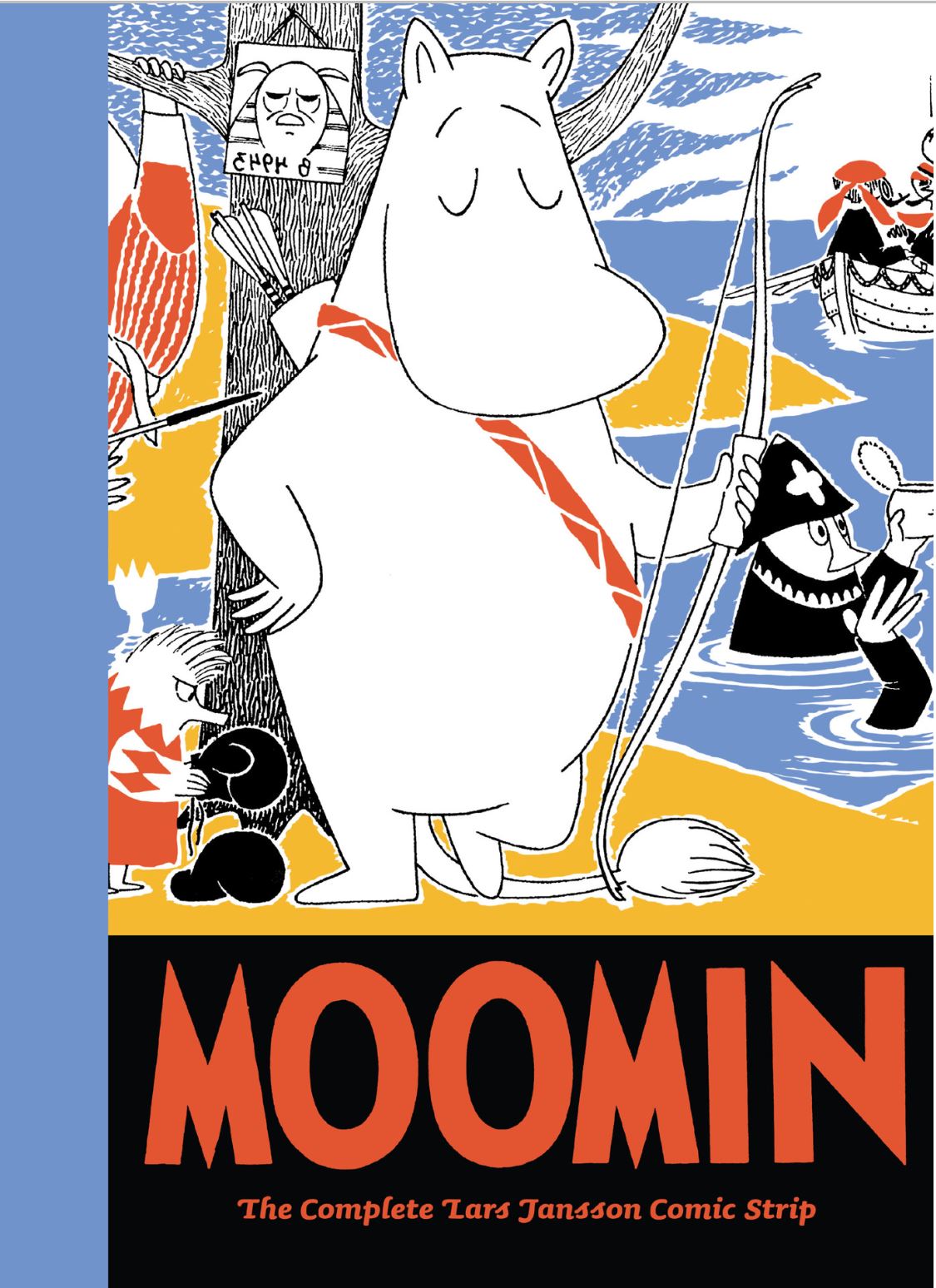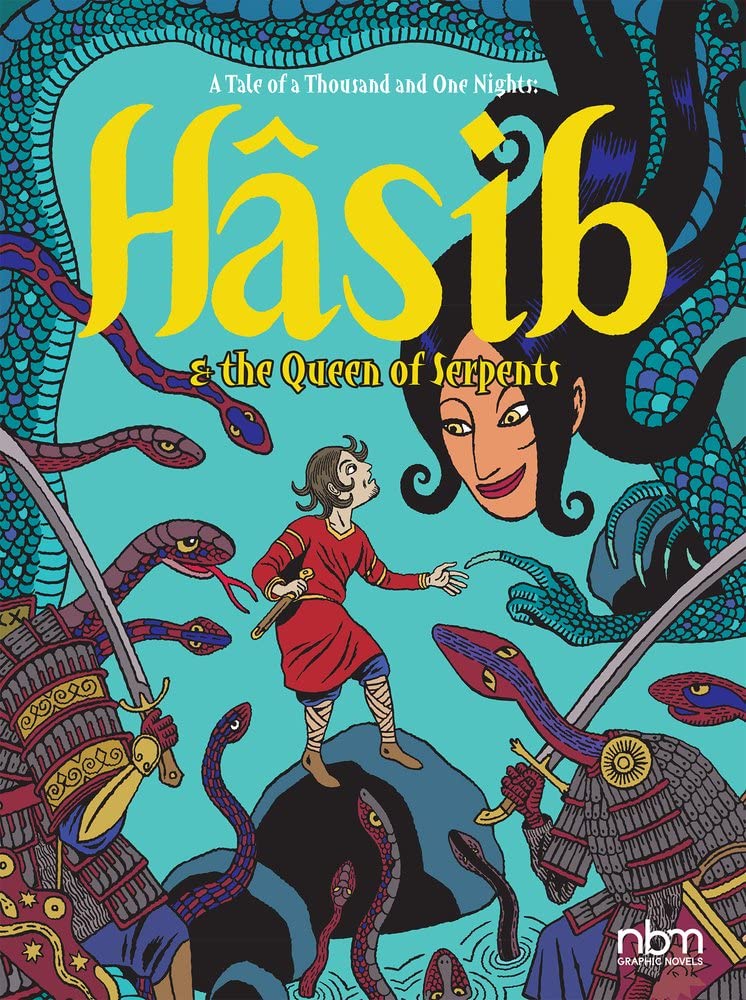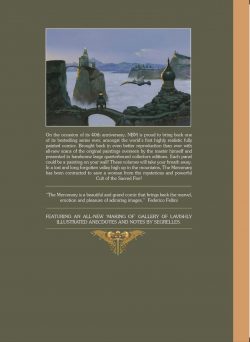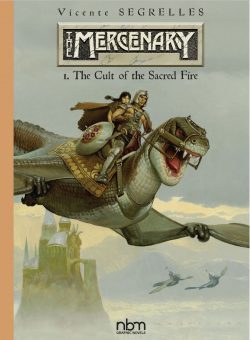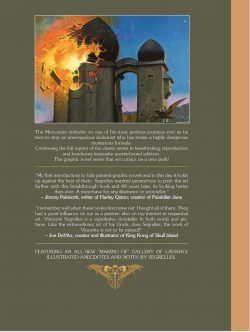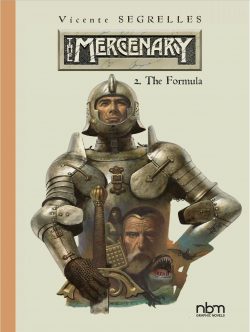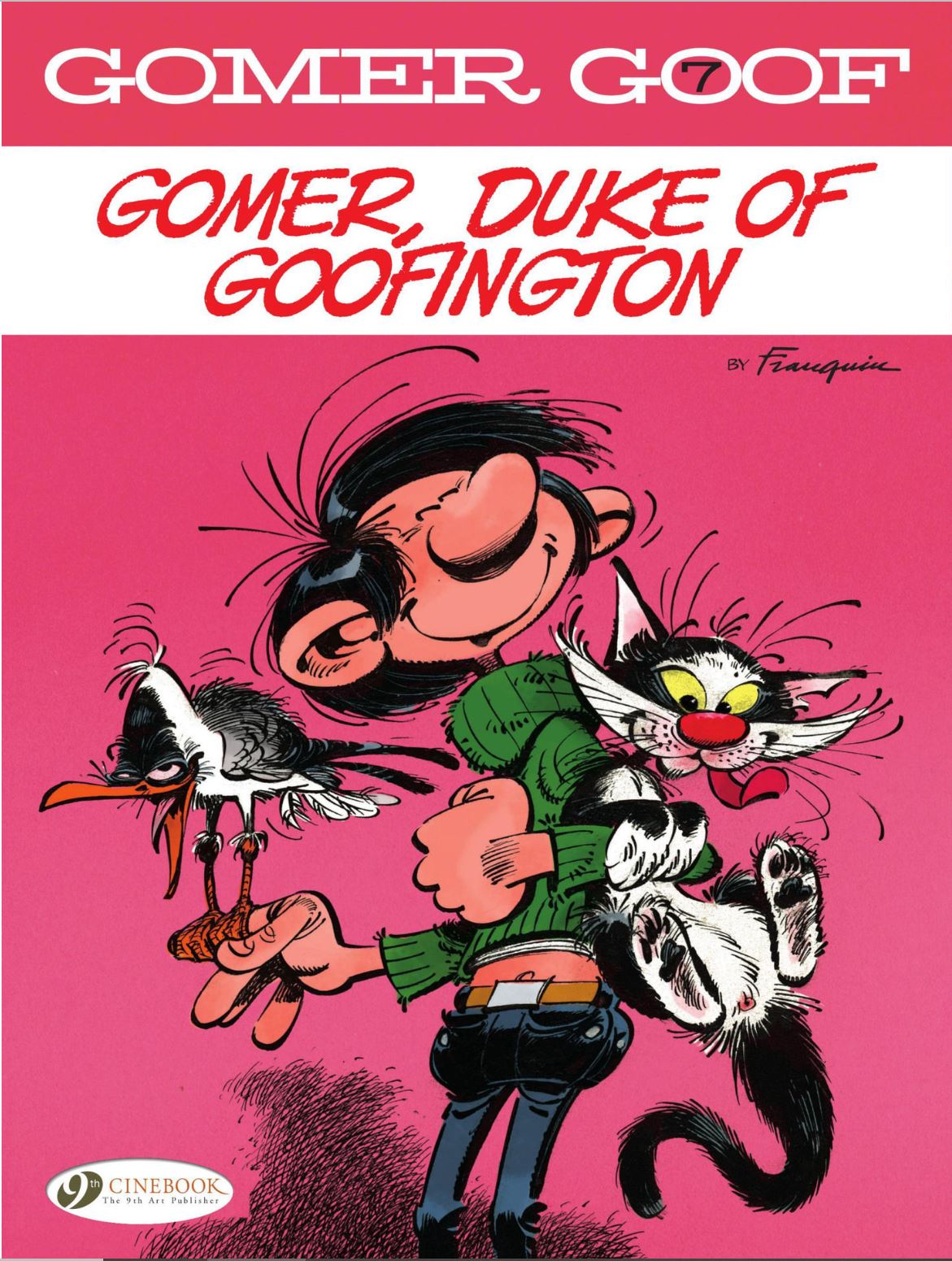
By Franquin, with Roba, Bibi and various: translated by Jerome Saincantin (Cinebook)
ISBN: 978-1-84918-590-5 (PB Album/Digital edition)
Like so much in Franco-Belgian comics, it all started with Le Journal de Spirou, which debuted on April 2nd 1938, with its iconic lead strip created by François Robert Velter AKA Rob-Vel. In 1943, publisher Dupuis purchased all rights to the comic and its titular star, and comic-strip prodigy Joseph Gillain (Jijé) took the helm for the redheaded kid’s further exploits as the magazine gradually became a cornerstone of European culture.
In 1946, Jijé’s assistant André Franquin was handed creative control. Graduating from gag vignettes to extended adventure serials, he introduced a broad and engaging supporting cast of regulars as well as phenomenally popular wonder beast The Marsupilami. Debuting in 1952 (in Spirou et les héritiers) that critter eventually became a spin-off star of screen, plush toys, console games and albums in his own right.
Franquin crafted increasingly fantastic and absorbing Spirou sagas until a final resignation in 1969. Over two decades he had enlarged the feature’s scope and horizons, until it became purely his own. In almost every episode, fans met startling and memorable new characters like comrade/rival Fantasio, crackpot inventor Count of Champignac and even supervillains. Spirou & Fantasio evolved into globetrotting journalists visiting exotic places, exposing crimes, exploring the incredible and clashing with bizarre and exotic arch-enemies.
Throughout it all, Fantasio remained a full-fledged – albeit fictional – Le Journal de Spirou reporter who had to pop into the office between cases. Sadly, lurking there was an accident-prone, big-headed junior in charge of minor jobs and dogs-bodying. He was Gaston Lagaffe – Franquin’s other immortal creation…
There’s a long tradition of comics personalising fictitiously mysterious creatives and the arcane processes they indulge in, whether it’s the Marvel Bullpen or DC Thomson’s lugubrious Editor and underlings at The Beano and Dandy – it’s a truly international practise.
Occasional asides on text pages featured well-meaning foul-up/office gofer “Gaston” (who debuted in #985, February 28th 1957). He grew to be one of the most popular and perennial components of the comic, whether as a guest in Spirou’s cases or his own strips and faux reports on editorial pages.
In terms of actual schtick and delivery, older readers will recognise favourite beats and timeless elements of well-intentioned self-delusion as seen in Benny Hill and Jacques Tati and recognise recurring situations from Some Mothers Do Have ’Em or Mr Bean. It’s slapstick, paralysing puns, infernal ingenuity and invention, pomposity lampooned and no good deed going noticed, rewarded or unpunished…
As previously stated, Gaston/Gomer draws a regular pay check (let’s not dignify or mis-categorise what he does as “work”) from Spirou’s editorial offices: reporting to journalist Fantasio, or complicating the lives of office manager Léon Prunelle and other, more diligent staffers, all whilst effectively ignoring those minor jobs he’s paid to handle. These include page paste-up, posting (initially fragile) packages and editing readers’ letters… and that’s the official reason why fans’ requests and suggestions are never answered…
Gomer is lazy, over-opinionated, ever-ravenous, impetuous, underfed, forgetful and eternally hungry, with his most manic moments all stemming from cutting work corners and stashing or consuming contraband nosh in the office. This leads to constant clashes with colleagues and draws in seemingly unaffiliated bystanders like traffic cop Longsnoot and fireman Captain Morwater, as well as simple passers-by who should know by now to keep away from this street.
Through it all our office oaf remains eternally affable, easy-going and incorrigible. Only three questions really matter here: why everyone keeps giving him one last chance, what can gentle, lovelorn, increasingly hot Miss Jeanne possible see in the self-opinionated idiot and will angry capitalist/ever-outraged financier De Mesmaeker ever get his perennial, pestiferous contracts signed?
In 1971, Gaston – Le cas lagaffe was the ninth European compilation and in 2020 became Cinebook’s seventh translated compilation: again focussing on non-stop all-Franquin comics gags in single- page bursts, but regrettably reducing the strip count from the original 54 to 44. Here our well-meaning, overconfident, overly-helpful know-it-all/office hindrance invents more stuff making life unnecessarily dangerous. These include a carrot-shotgun to refresh and fortify rabbits as they evade hunters, personal weather control, a too-fast collapsible bike and jet-powered mail delivery system, but he also accidentally ruins his image and work-avoiding record by providing a scratch solution to keep the studio active and productive during a major power cut…
Despite resolute green credentials and leanings, Gomer is colour-bind to the problems his antiquated automobile cause, even after his attempts to soup up the fuel injection result in the world’s most potent blue dye which constantly escapes from the battered exhaust pipe as an all-consuming cobalt cloud.
Many strips feature his doomed love affair with and manic efforts to modify and mollify the accursed motorised atrocity he calls his car. Sadly, the decrepit, dilapidated Fiat 509 is more in need of a merciful execution than his many well-meant engineering interventions for countering its lethal road pollution and failure to function. Now it also confirms his outlaw status with the gendarmerie – quite literally – with many moments of floating “blue flu”…
As he concentrates of making motoring faster and more fun if not actually safer, Gomer’s big heart swells to encompass more animal pals. He adopts a feral cat and black-headed gull to accompany illicit studio companions Cheese the mouse and goldfish Bubelle, but their hyperactive gluttonous presences generate much chaos, especially whenever benighted business bod De Mesmaeker turns up with more crucial contracts for poor Prunelle to sign. Their residence even triggers a shift in work attire, with safety superseding style as a prerequisite…
Fresh strands of anarchic potential are explored during the organisation of events for Spirou creators like Lambil (Bluecoats) and Roba (Billy & Buddy), with Gomer wearing mascot costumes and paying heavily for it. Then there’s the arrival of Mr. Bacus. He’s an auditor for Dupuis, resolved to find financial fault and cut calamitous costs, but he’s far too curious for an office where the gofer stashes weird science prototypes, arcane chemical concoctions and a manic menagerie able to shred chairs and open sardine tines with a bash of the beak. At least he learns why redecorating costs are so high and frequent…
Gomer’s chum and opposite number Jules-from-Smith’s-across-the-street is a like-minded soul and born accomplice, ever-eager to slope off for a chat and a confirmed devotee of Gomer’s methods of passing the time whilst at work. He is always ready to help, as here when assisting in transporting an out-of-control cactus from Aunt Hortense’s home to the office. It doesn’t fit there either, but at least has plenty of fresh victims to puncture and terrify…
In his spare time Gomer continues his dream of revolutionising kite-flying, but again has trouble with Christmas after the office plays host to the live turkey he rescued last year…
Far better enjoyed than précised or described, these strips allowed Franquin and occasional co-scenarists and idea providers like Roba, Bibi, Michel, Yvan Delporte & Jidéhem (AKA Jean De Mesmaeker: just one of many in-joke analogues who populate the strip) to flex their whimsical muscles and even subversively sneak in some satirical support for their beliefs in pacifism, environmentalism and animal rights. These gags are sublime examples of all-ages comedy: wholesome, barbed, daft and incrementally funnier with every re-reading.
Why haven’t you Goofed off yet?
© Dupuis, Dargaud-Lombard s.a. 2009 by Franquin. All rights reserved. English translation © 2020 Cinebook Ltd.


